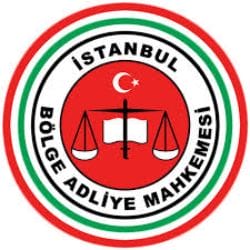BASARIYA v. RUSSIA
Communicated on 20 May 2019
THIRD SECTION
Application no. 38413/11
Yuliya Igorevna BASARIYA
against Russia
lodged on 15 June 2011
STATEMENT OF FACTS
The applicant, Ms Yuliya Igorevna Basariya, is a Russian national, who was born in 1981 and lives in Rostov-on-Don.
The facts of the case, as submitted by the applicant, may be summarised as follows.
A. Incident of 20 August 2005
At around 10.30 p.m. on 20 August 2005 the applicant’s husband, Mr B., travelled as a passenger in a car driven by Mr G. The car drove down the Nagibina street in Rostov-on-Don. At building no. 27 it was spotted by the police. Mr G. did not have a driving licence and decided to ignore the police’s invitation to stop. A pursuit commenced with Mr G. escaping and two officers, R. and K., trying to force Mr G. to stop the vehicle. During the pursuit officer R. started shooting at the car from his PM gun, aiming at the right back tyre. One of the bullets hit Mr B. on the back of the head, injuring him. The car eventually stopped and Mr B. was placed in intensive care and on the next day passed on.
B. Subsequent investigation
A preliminary inquiry was initiated and conducted by the prosecutor’s office of the Voroshilovskiy District of Rostov-on-Don, which eventually lead to the decision of 18 November 2005 to institute criminal investigation into the events. Between that date and June 2008 the case was investigated and on 5 June 2008 investigator Zh. discontinued the proceedings in respect of Mr R. for the lack of indication of a crime. The investigation made the following findings:
- immediately after the incident Mr G., who conducted the car, was diagnosed as having taken heavy drugs some time prior to the ride and was also found to be in possession of a load of drugs in the trunk of the car;
- Mr G. intentionally tried to escape the police, fearing consequences for his intoxicated state, the drug load and the lack of driving licence;
- when escaping, Mr G. drove in the centre of the city dangerously, crossing the crossroads at the red light and driving on the pavements;
- the pursuit lasted for a considerable amount in somewhat crowded part of the city (even given the late hour);
- the police gave multiple warnings and also tried unsuccessfully to push Mr G’s car to the side of road;
- two warning shots were fired in the air and six more aimed shots were fired at the tyres. The latter produced five holes at the lower right part of the car’s trunk and one hole at the back window of the car and the passenger’s seat;
- the applicant’s husband Mr B. was injured as a result of one of the shots;
- the ballistic examination of the trajectory of the fatal shot established that the most likely reason for officer R.’s shooting Mr B. was the fact that that particular stretch of the road was quite bumpy which adversely affected the accuracy of officer R’s shot;
- the emergency team quickly arrived the scene and moved the applicant’s husband to the hospital, but the wound proved lethal.
The investigator collected oral, written and scientific evidence with respect to each of the above points and gave an opportunity to the applicant to comment and participate in their examination. It then concluded that in the present case the police officer R. acted in full compliance with the relevant regulations, that Mr G.’s driving during the pursuit was dangerous to the public, that the police team made their outmost to minimise the damage by making oral warnings and warning shots in the air, by trying to push the car to the side of the road and that the shooting officer R. made a reasoned decision to shoot at the tyres in order to stop the vehicle. The investigator then concluded that shooting Mr B. was a tragic coincidence, that officer R. did not act negligently and that given all of the above factors the criminal proceedings should be discontinued.
This decision was upheld at first instance by the Voroshilovskiy District Court on 12 October 2010 and on appeal by the Rostov Regional Court on 15 December 2010.
COMPLAINTS
The applicant complains under Articles 2, 6, 13 and 14 of the Convention that the use of lethal force in respect of her husband was grossly disproportionate and in fact unlawful and that the domestic authorities failed properly to investigate the events. She also alleges that the State actions were discriminatory and racially motivated, as her husband was an ethnic Georgian.
QUESTIONS TO THE PARTIES
1. Were the requirements of the substantive aspect of Article 2 of the Convention respected in so far as the events of 20 August 2005 are concerned? The parties are requested to address the following points:
(a) Was the use of lethal force justified with reference to any of the aims listed in that Convention provision?
(b) Was the use of lethal force during the pursuit absolutely necessary within the meaning of that Convention provision?
(c) What was the legal framework regarding the use of lethal weapons during police pursuits and was specific training did the officers involved in the operation have prior to the operation?
(d) Were there any other alternative means available to the authorities to stop the car?
2. Were the requirements of the procedural aspect of Article 2 and Article 13 of the Convention respected in so far as the investigation of the events of 20 August 2005 is concerned? In particular, was the investigative full, objective and effective, as required by that Convention provision.
Full & Egal Universal Law Academy




